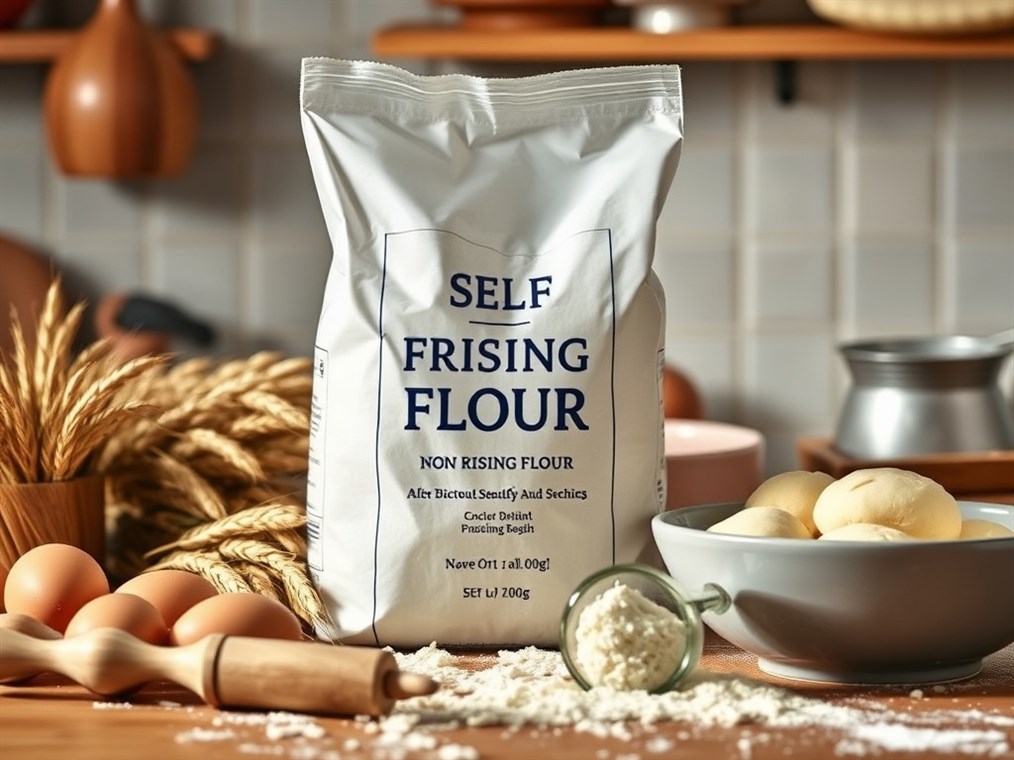Self-Rising Flour: More Than Just Flour, Baking Powder, and a Pinch of Salt!
Okay, let’s talk self-rising flour. It’s one of those ingredients that can be a real lifesaver in the kitchen, especially if you’re the type who loves to whip up a batch of biscuits or scones on a whim. But have you ever stopped to think about what actually makes it “self-rising?” It’s more than just a clever name, that’s for sure!
Basically, self-rising flour is a pre-mixed blend—a baker’s shortcut, if you will—combining flour with the leavening power of baking powder and just the right touch of salt. Think of it as the all-in-one solution for recipes where you need a little lift.
Now, about those core ingredients… First up, flour. Most self-rising flour relies on a softer, gentler type of wheat flour—one with lower protein. Why? Because it gives your baked goods a more delicate, melt-in-your-mouth texture. But don’t worry, if you only have all-purpose flour on hand, that’ll work too in a pinch!
Next, we have baking powder, the real magic behind the “self-rising” part. It’s a clever combo of baking soda (that’s the base) and some acid salts. When these guys get wet, they throw a little party, releasing carbon dioxide gas. These bubbles are what make your cakes fluffy and your biscuits tall!
And finally, salt. It’s not just there for flavor, though it definitely does enhance things. Salt also plays a crucial role in keeping the baking powder in check. Think of it as the bouncer at the baking party, making sure things don’t get too crazy.
So, what are the magic numbers? Well, a good rule of thumb is to use about 1 cup of flour, 1 1/2 teaspoons of baking powder, and a 1/4 teaspoon of salt. Get those ratios right, and you’re golden! Too much baking powder, and you’ll end up with something that tastes a bit…off. Too little, and your baked goods will be flatter than a pancake. Nobody wants that!
You know, my grandma always swore by White Lily self-rising flour for her biscuits. She said it was the secret to their perfect tenderness. And you know what? She was probably right! That’s because many of those Southern self-rising flours use a special bleached, low-protein flour. It makes a difference, trust me. If you’re feeling ambitious, King Arthur Baking suggests using their Pastry Flour Blend or Pastry Flour for a more tender result when making homemade self-rising flour.
Now, here’s a question I get asked all the time: Is it better to buy self-rising flour or make your own? Honestly, it depends.
Making your own is super easy. Plus, you have total control over the ingredients. But there’s something to be said for the convenience of store-bought. And let’s be real, those big companies have perfected the art of consistent mixing. Plus, they often use those special flour types that are hard to find on your own.
A few things to keep in mind, though. Self-rising flour doesn’t last forever. That baking powder loses its oomph over time, so aim to use it within six months. And hey, pro tip: slap a label on your homemade stuff with the date. Trust me, future you will thank you. Also, be aware that self-rising flour can be a bit high in sodium. So, if you’re watching your salt intake, making your own and cutting back on the salt is a smart move.
One last thing: keep in mind that self-rising flour can vary a bit depending on where you are in the world. For example, in the UK, it might have a slightly different formulation than what you’d find here in the States.
So, there you have it! Self-rising flour: a simple mix with a big impact. Whether you grab a bag at the store or whip up your own batch, understanding what’s inside will help you bake up some seriously delicious treats. Happy baking!

